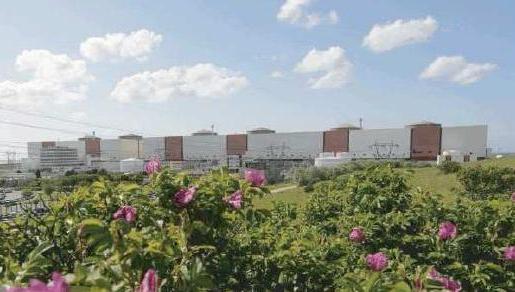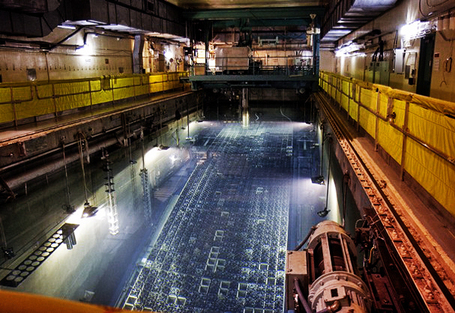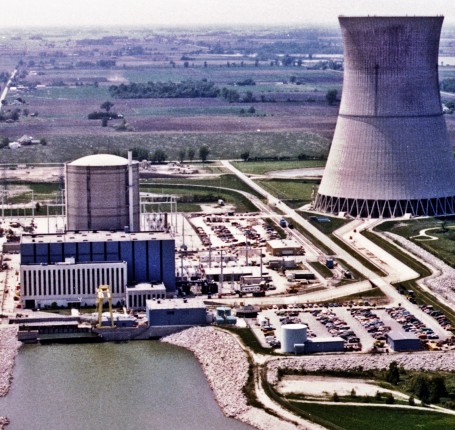It looks like you're using an Ad Blocker.
Please white-list or disable AboveTopSecret.com in your ad-blocking tool.
Thank you.
Some features of ATS will be disabled while you continue to use an ad-blocker.
share:

(continued from previous post)
Meanwhile, back at the ranch:
Every day, there is more waste, more radioactive pollution, such as tritium, which is killing our citizens, and more of the "ignoble seven" whose daughter products include noble gases, which are freely released by nuclear power plants in copious quantities.
The "ignoble seven" are: Technetium-99, Tin-126, Selenium-79, Zirconium-93, Cesium-135, Palladium-107, and Iodine-129.
All have half-lives > 200,000 years.
Someone seems to have missed the elephant in the room.
All nuclear power plants need to be closed NOW.
They are old, corroded, embrittled, dilapidated and their employees have repeatedly abdicated their responsibilities - from proper training, to doing their fire rounds, to numerous problems with top management, to not giving a damn about possible irreversible catastrophe only ONE accident away, and so on.
Every day the plants run, they increase the total risk, the total cost, the immediate risk, and the immediate cost -- costs in terms of health effects around the plants, and delayed costs from accidents or just from fuel storage.
Even if we stop making nuclear waste, every movement of the fuel entails enormous risk. And there will be tens of thousands of shipments from all around the country.
source
source
But what, when, how and where?
Scientists don't know.
Each trip is a terrorist's best friend and a sane person's worst nightmare.
When the music stopped, radioactive waste appears to be where it will stay for the foreseeable future.
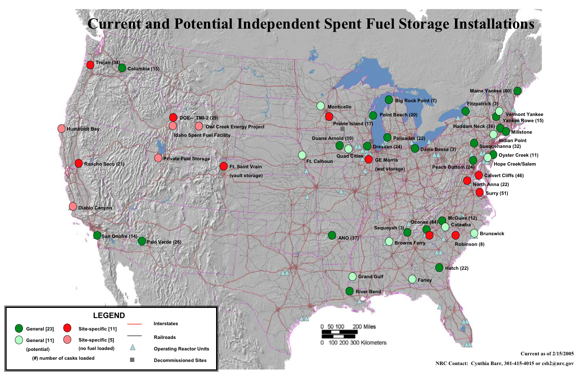
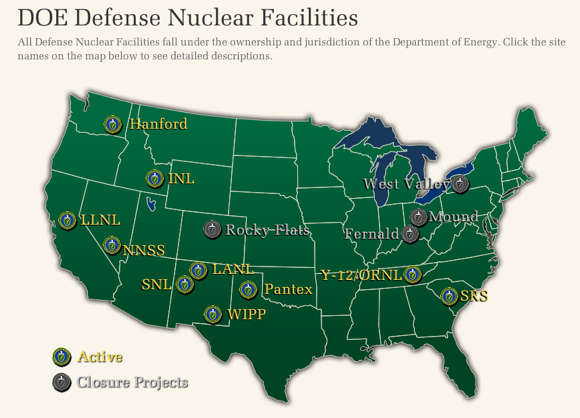
Let us go back in history a couple of years in an attempt to understand this nuclear waste shell game.
19 May 2009
Billions in tax dollars found buried in Nevada Cave
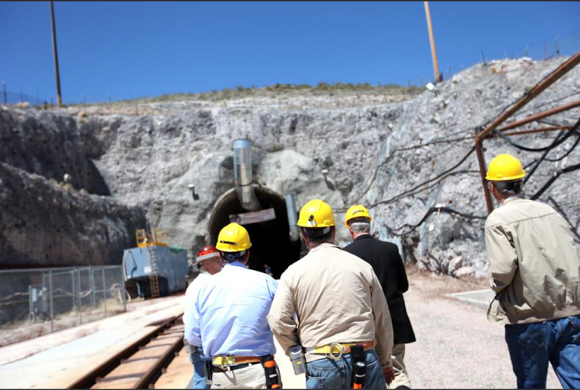
If you think anyone in Washington gives a damn about your money, listen to how they have wasted it, and will continue to waste it, because of "politics."
Taxpayers have spent more than $10 billion dollars digging a hole in a mountain in Nevada where the nation's nuclear waste was supposed to go.
The Yucca Mountain project has been underway for nearly three decades.
In 1987, Congress even passed a law explicitly directing waste from the nation's nuclear power plants would start arriving in Yucca Mountain in by the late 1990's.
So far, not one single radioactive isotope has made its way to Yucca, and probably never will.
President Obama, making good on a promise to Senate Majority Leader (and not-in-my-backyard-of-Nevada) Harry Reid, has effectively killed any future for the Yucca Mountain facility. More than $10 billion dollars of scientific study, engineering and congressional spending has just been thrown into a hole in the ground.
But Yucca Mountain is not officially dead, and here is where the real arrogance of wasting your money comes in.
Even the President cannot kill the project because, remember, the project is law.
According to the federal government, the government is required to build Yucca Mountain and accept the waste.
Senator Harry Reid (D-NV) would like to change that law, but without an option for where all this waste will go, it may be hard to get the votes.
So what to do?
Keep Yucca Mountain on life-support while you spend money looking for another alternative. President Obama plans to do just that by spending $197 million dollars in the 2010 budget, essentially to pay people to do nothing.
Out at Yucca Mountain, there will be a staff getting paid, proceeding with licensing and other odds and ends, [color=Cyan]knowing all along that the project has no future.
It's pure politics that has already cost you and me $10 billion dollars and now $197 million more.
Let's hope they don't carve out more of Yucca Mountain to stuff with dollar bills.
To be continued ...

Peace Love Light
tfw
[align=center][color=magenta]Liberty & Equality or Revolution[/align]

(continued from previous post)
... 41 weeks ago ...
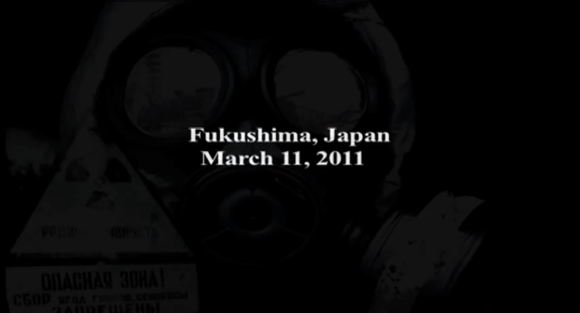
And this from only a week before the world changed.
3 March 2011
As U.S. Moves Ahead with Nuclear Power, No Solution for Radioactive Waste
President Obama has won wide bipartisan support for his determination to revive American nuclear power — a low-carbon energy solution that electric utilities and conservatives can support.
But a pair of legal actions last month could complicate matters for Washington by forcing the Nuclear Regulatory Commission (NRC) to address [color=Cyan]a longstanding and almost intractable problem: How and where to store the highly radioactive waste.
For many, the separate suits by state attorneys general and environmental groups raise fresh questions over why America is pouring billions into a nuclear renaissance with [color=Salmon]no long-term strategy for handling waste from the nation's existing facilities.
[color=Chartreuse]The waste problem is the Achilles heel of the nuclear industry,’ said Daniel Hirsch, president of the Committee to Bridge the Gap, a California-based nuclear watchdog...
In December 2010, NRC changed the rule, doubling the amount of time that waste can be stored on-site from 30 years after a plant goes out of service to 60 years. Now, it appears the agency might double that again.
In an interview with SolveClimate News, NRC spokesperson Neil Sheehan said [color=Cyan]a plan was underway to allow the high-level waste to be stored on-site for over 120 years...
At Indian Point, one of the oldest reactors in the country, 30 tons of enriched uranium radioactive waste is produced every 18 months, most of which is crammed into 40-foot deep pools at each of the two reactors.
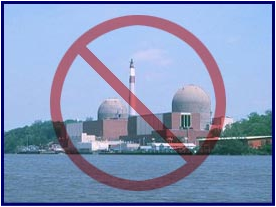
Notable Quotes
"The Nuclear Regulatory Commission has ranked Indian Point ‘in terms of potential human consequences as the No. 1 site in the nation."
-- Robert Stephan, Homeland Security's Assistant Secretary for Infrastructure Protection reported in the Journal News, March 23, 2006
Indian Point is "one of the most inappropriate sites in existence" for a nuclear plant.
--Robert Ryan, Nuclear Regulatory Commission staff member in 1979
Back to Indian Point:
Currently, each pool holds about 1,000 tons of radioactive waste. An additional 1,500 tons are stored in 15 dry casks on an open tarmac surrounded by barbed wire and a surveillance tower.
Remember that number: 100 tons per dry cask.
Across the country, 50,000 metric tons of waste was produced through the end of 2003, according to a 2005 report by the National Research Council. The nonprofit Union of Concerned Scientists predicts that by 2015 there will be over 75,000 metric tons of radioactive waste stored at temporary sites.
Indian Point will close in 2035, if it gets relicensed. Under the new waste storage rule, [color=Cyan]spent fuel would be stored there until 2095, and could remain on-site well into the 22nd century if the rule extends to 120 years.
And yet, the beat goes on...
22 December 2011
Nuke regulators bless reactor design amid Capitol Hill cheers, jeers
The Nuclear Regulatory Commission on Thursday approved the amended design for the Westinghouse AP1000, a reactor that several power companies intend to use for building the first new US nuclear plants in decades.
More Nukespeak, blah, blah, blah...
“The design provides enhanced safety margins through use of simplified, inherent, passive, or other innovative safety and security functions, and also has been assessed to ensure it could withstand damage from an aircraft impact without significant release of radioactive materials,” NRC Chairman Gregory Jaczko said in a statement.
... “significant release of radioactive materials.”
Is there a number attached to significant?
Is that like being a little bit pregnant?
What does that number equate to in "collateral damage" - human lives?
To be continued...

Peace Love Light
tfw
[align=center][color=magenta]Liberty & Equality or Revolution[/align]

(continued from previous post)
Utility giant Southern Co. is using the AP1000 for its project to build two new reactors at its Vogtle site in Georgia.
"This is another key milestone for the Vogtle project and the nation's nuclear renaissance,” said Southern Co. CEO Thomas A. Fanning. The Southern Co. project that has won a [color=Cyan]conditional $8.3 billion Energy Department loan guarantee but still awaits a final NRC license...
One might offer that if insurance and satisfactory waste disposal matters were a prerequisite to licensing, there would not be any more nuclear power plants built in America.
And on the day before the world changed:

10 March 2011
Double attack on US nuclear waste fees
(...) Funding for Yucca Mountain has come from a levy of 0.1 cents per kWh of nuclear power, which currently adds up to about $770 million per year. Nuclear utilities - and therefore their customers - have now paid a total of over $31 billion into the Nuclear Waste Fund.
The government was supposed to use this money to create a permanent nuclear waste disposal site by 1998.
Around $7 billion was spent and much progress made, but Yucca was cut off from funding in May 2009 by President Barack Obama and energy secretary Stephen Chu.
But, that was then and this is now.
Where, oh where is the waste going now? Is any of it being trucked around the country to a location different from the nuclear facility where the waste was generated? Ya think?
Having submitted an 8600-page application to build Yucca Mountain under President George Bush and his energy secretary Sam Bodman, the DOE under direction from Chu and Obama moved to withdraw it in May. Spending on Yucca is now set at the absolute minimum level, while the [color=Cyan]$24 billion balance of the fund remains with the US Treasury earning substantial compound interest of over $1 billion per year.
Let's see...that's a couple billion more...so there should be about $26 billion available.
How does one actually verify that this is a correct and true amount and where is the entry on the ledger?
Is it really there?
If not, would not that be something to investigate, identify the perpetrators and persecute, errrrr, prosecute, to the fullest extent of the law?
Here is where Obama made sure the process is still in process with no real movement regarding the safe disposal of radioactive waste.
Why are the power companies allowed to utilize this "to cheap to meter" power source?
This, however, was rejected by the Nuclear Regulatory Commission's independent Atomic Safety and Licensing Board (ASLB). The DoE had no right to substitute its own ideas in place of those legislated by Congress, said the ASLB, and is bound by law to complete its work at Yucca Mountain unless Congress acts to supercede the previous legislation.
"Completing the work" at Yucca Mountain means exactly what?
Does that imply that the money is conveniently tied up by legalize and not available to whatever entity is charged with the work?
In the meantime, Obama has created a 'Blue Ribbon' commission on radioactive waste management. It is hearing evidence from a range of stakeholders on waste management methods including reprocessing, recycling and the use of burner reactors as well as the widely accepted geologic disposal method as proposed for Yucca Mountain.
What the hell have they been doing for the past 50 years if not investigating the above?
And this bit of DoubleSpeak from Energy Secretary Steven “Nukee” Chu yesterday:
Chu calls reactor design approval ‘important milestone’
Energy Secretary Steven Chu is happy that the Nuclear Regulatory Commission has approved Westinghouse’s AP1000 nuclear reactor design, which is slated for use at an Energy Department-backed nuclear power plant in Georgia.
Chu’s praise for the design approval underscores [color=Cyan]Obama administration support for new nuclear power plants, a position at odds with some environmental groups.
[color=Chartreuse]‘The Administration and the Energy Department are committed to restarting America’s nuclear industry...” Chu said in a statement Thursday.
The game is on.
What say you?

Peace Love Light
tfw
[align=center][color=magenta]Liberty & Equality or Revolution[/align]

RADIATION WATCH 2011
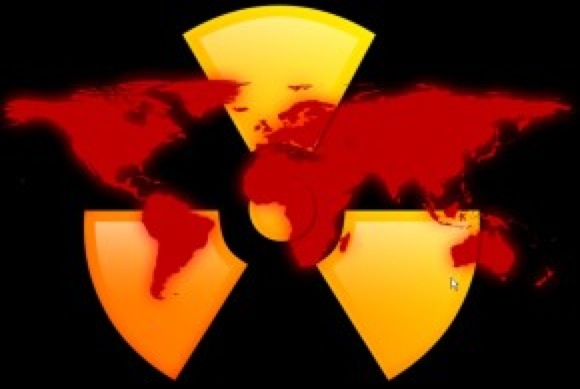
[color=Cyan]The total number of days between Friday, March 11, 2011 and Saturday, December 31, 2011 is 295 days.
[color=FDD017]The radiation poisoning of we, the people, our children, pets, food, water and our land
has continued unabated - 24/7/365
[color=Chartreuse]
- for 8 months, 29 days ... which is:
• 25,488,000 seconds
• 424,800 minutes
• 7,080 hours
• 42 weeks (rounded down)
Once again, are we any closer to a solution to the Fukushima multiple melt-throughs disaster/fiasco spewing life-altering clouds of radiation 24/7/365
There seems to be a discussion as to whether or not the Unit #4 reactor had fuel in it.
In our last post, we quoted various TEPCO Press Releases as to the fact that the fuel had been offloaded to facilitate work on the reactor shroud. To that, we add this:
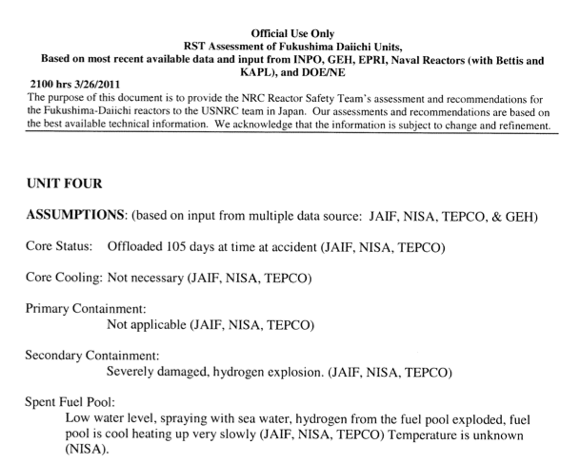
Meanwhile, back at the ranch.
22 December 2011
Gravelines 1 shut down for crack repair
Inspection work has revealed tiny cracks on a penetration at the bottom of Gravelines 1's reactor pressure vessel. The power unit remains shut down until a repair has been made...
The tiny cracks were discovered within the pressure vessel in the area of welded alloy around the tube at Gravelines 1. The Nuclear Safety Authority (ASN) said it was the first time such a defect has been found in France, although [color=FDD017]similar faults were dealt with in 2003 at the South Texas Project site in the USA. EDF owns and operates Gravelines 1 along with France's 57 other power reactors...
EDF has been requested by the ASN to check all its 900 MWe and 1300 MWe reactors for similar cracks - a total of 54 units.
Since South Texas was brought up...
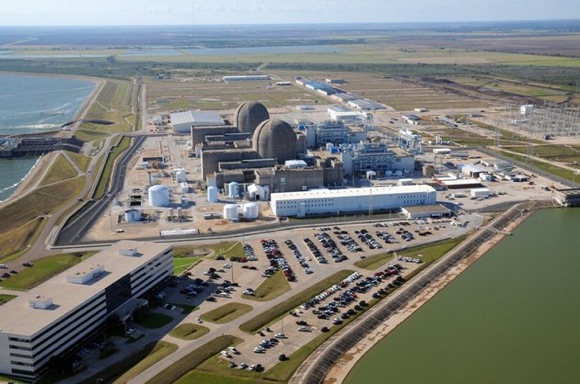
Cracking at South Texas Nuclear Station Jolts Entire Industry
On April 12, 2003 with one of the two units at South Texas Project nuclear power station near Bay City, Texas shut down for routine refueling, an inspection of the bottom of a major safety component, the reactor pressure vessel, found cracking in two bottom-mounted instrumentation penetration nozzles.
The unanticipated cracking was discovered after small crystalline deposits of leaking reactor coolant were visually discovered around the penetration nozzles.
[color=Chartreuse]The “first-of-a-kind” cracking at South Texas is another in a series of mounting surprises that plague an aging nuclear power industry and its federal regulator.
In fact, the cracking in a relatively young South Texas reactor may indicate that the industry and its regulator are falling behind an event-driven curve of unanticipated and significant safety problems that are emerging faster than can be recognized and effectively managed.
Almost sounds like an epidemic... oops, spoke too soon.
Circumferential cracking around top-mounted control rod penetration nozzles was discovered just two years earlier at the Oconee-2 and -3 nuclear power stations in South Carolina.
Just last year, operators at Ohio’s Davis-Besse nuclear power station found extensive corrosion through the top of the reactor pressure vessel. [color=Cyan]Highly corrosive borated coolant leaking through cracked control rod drive penetration nozzles had eaten a football-size cavity through 6.75 inches of carbon steel in a previously un-inspected area of the vessel head, leaving only the thin corrosive-resistant stainless steel inner liner, a mere 3/16th of an inch thick.
The stressed liner had bulged out into the cavity due to the tremendous internal pressure. [color=Cyan]Analysis concluded that the vessel would likely have ruptured within 12 months of continued reactor operation.
Extremely tight and even microscopic through-wall cracks are of significant concern where a component can break before any telltale leakage is noticed, throwing the reactor into a cascade of failures and a catastrophic accident.
... The cracked nozzle segments were cut out and replaced with what is thought to be a more crack resistant Alloy 690.
[color=FDD017]The actual cause and rate of growth of the cracking and leakage largely remains a mystery to the industry and the NRC.


Peace Love Light
tfw
[align=center][color=magenta]Liberty & Equality or Revolution[/align]

RADIATION WATCH 2011

[color=Cyan]The total number of days between Friday, March 11, 2011 and Saturday, December 31, 2011 is 295 days.
[color=FDD017]The radiation poisoning of we, the people, our children, pets, food, water and our land
has continued unabated - 24/7/365
[color=Chartreuse]
- for 8 months, 29 days ... which is:
• 25,488,000 seconds
• 424,800 minutes
• 7,080 hours
• 42 weeks (rounded down)
Once again, are we any closer to a solution to the Fukushima multiple melt-throughs disaster/fiasco spewing life-altering clouds of radiation 24/7/365
There seems to be a discussion as to whether or not the Unit #4 reactor had fuel in it.
In our last post, we quoted various TEPCO Press Releases as to the fact that the fuel had been offloaded to facilitate work on the reactor shroud. To that, we add this:

Meanwhile, back at the ranch.
22 December 2011
Gravelines 1 shut down for crack repair
Inspection work has revealed tiny cracks on a penetration at the bottom of Gravelines 1's reactor pressure vessel. The power unit remains shut down until a repair has been made...
The tiny cracks were discovered within the pressure vessel in the area of welded alloy around the tube at Gravelines 1. The Nuclear Safety Authority (ASN) said it was the first time such a defect has been found in France, although [color=FDD017]similar faults were dealt with in 2003 at the South Texas Project site in the USA. EDF owns and operates Gravelines 1 along with France's 57 other power reactors...
EDF has been requested by the ASN to check all its 900 MWe and 1300 MWe reactors for similar cracks - a total of 54 units.
Since South Texas was brought up...

Cracking at South Texas Nuclear Station Jolts Entire Industry
On April 12, 2003 with one of the two units at South Texas Project nuclear power station near Bay City, Texas shut down for routine refueling, an inspection of the bottom of a major safety component, the reactor pressure vessel, found cracking in two bottom-mounted instrumentation penetration nozzles.
The unanticipated cracking was discovered after small crystalline deposits of leaking reactor coolant were visually discovered around the penetration nozzles.
[color=Chartreuse]The “first-of-a-kind” cracking at South Texas is another in a series of mounting surprises that plague an aging nuclear power industry and its federal regulator.
In fact, the cracking in a relatively young South Texas reactor may indicate that the industry and its regulator are falling behind an event-driven curve of unanticipated and significant safety problems that are emerging faster than can be recognized and effectively managed.
Almost sounds like an epidemic... oops, spoke too soon.
Circumferential cracking around top-mounted control rod penetration nozzles was discovered just two years earlier at the Oconee-2 and -3 nuclear power stations in South Carolina.
Just last year, operators at Ohio’s Davis-Besse nuclear power station found extensive corrosion through the top of the reactor pressure vessel. [color=Cyan]Highly corrosive borated coolant leaking through cracked control rod drive penetration nozzles had eaten a football-size cavity through 6.75 inches of carbon steel in a previously un-inspected area of the vessel head, leaving only the thin corrosive-resistant stainless steel inner liner, a mere 3/16th of an inch thick.
The stressed liner had bulged out into the cavity due to the tremendous internal pressure. [color=Cyan]Analysis concluded that the vessel would likely have ruptured within 12 months of continued reactor operation.
Extremely tight and even microscopic through-wall cracks are of significant concern where a component can break before any telltale leakage is noticed, throwing the reactor into a cascade of failures and a catastrophic accident.
... The cracked nozzle segments were cut out and replaced with what is thought to be a more crack resistant Alloy 690.
[color=FDD017]The actual cause and rate of growth of the cracking and leakage largely remains a mystery to the industry and the NRC.


Peace Love Light
tfw
[align=center][color=magenta]Liberty & Equality or Revolution[/align]

edit on 31/12/2011 by thorfourwinds because: (no reason given)

Greetings:
Dear reader, we certainly do live in exciting times, and we now may very well be witness
to a tipping point in human history without having to experience the seeming obligatory,
made-for-TV self-immolation pics so prevalent in today’s current events.
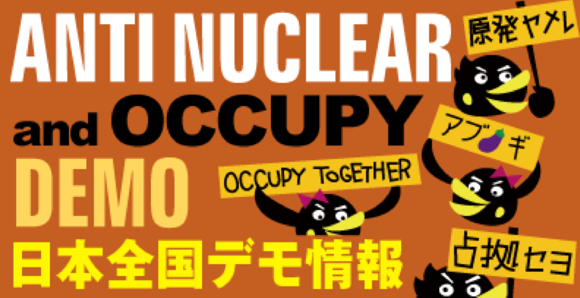
[color=FDD017]The unification of the Occupy and Anti-Nuclear movements worldwide has exploded into the worst nightmare conceivable for the intertwined military industrial complex and the beleaguered commercial nuclear power industry, because an informed, motivated and disenfranchised populace is an enraged monster that cannot be easily returned to the cage.
The Anti-Nuclear and Occupy (ANO) collective is the natural extension of of the violently repressed feelings left over from the gone-to-ground hippies of the turbulent ’60s and present-day American citizens disenchanted with the policies of the current administration and the manifesting awareness of the complicit EPA/USGOV cover-up with the JAPGOV and TEPCO in the mother of all conspiracies - disenfranchisement of the world populace of truthful, quality information enabling them to make educated decisions regarding radiation poisoning and violations of their right to a radiation-free life.
This planet-wide union has been in the mix since the outset of the anti-nuclear movement, and all that was needed was a unifying catalyst to bring the ideas together in one ever-expanding voice: NO NUKES!
Fukushima Dai-ichi provided that catalyst in the worst way and we must now act accordingly or bear the fatal consequences of unending years of continuing nuclear holocaust from the annihilated multiple melt-throughs that continue, unabated, 24/7/365.
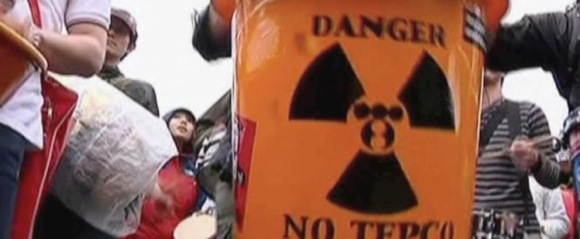
Now, more than ever before, concerned citizens who wish for a nuclear-free future for themselves, their children, and children for all generations to come must take a stand now and demand a radiation-free environment.
Now is the time for all men, women and children to come to the aid of their severely, if not mortally wounded Mother Earth.
But first, just in, Breaking News from Colorado!
"Radiation CPM spikes to 192 today as Colorado continues to undergo daily nuclear fallout from the crippled Fukushima Dai-ichi nuclear power plant."
The same multiple melt-throughs that continue to spew life-altering radiation 24/7/365 with
no end nor solution in sight. The really scary part of all this is, TEPCO has admitted that the technology does not presently exist to “adequately” deal with the crisis.
Just for grins and in an attempt to keep somewhat informed, we monitor a veritable plethora
of radiation monitoring sites around the world, with a particular eye to disturbing trends here
in America, and we offer these readings from Colorado ... the spikes were interesting today:
BTW, the EPA, FDA and the USGOV continue to assure the public that there is no cause for alarm and any erroneous connection between rainwater at [color=Cyan]14,000+% above legal limits and drinking water is contentious to say the least. The fact that there exists nothing to filter out any type of radionuclide from the rainwater flowing from the reservoirs through the city water plants seems to amazingly escape the light of day.
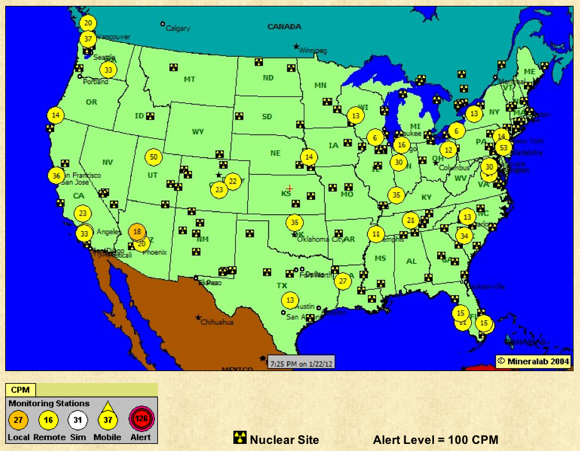
OK, Alert Level = 100, seems simple enough.
So, what do these readings indicate from yesterday, enquiring minds want to know?
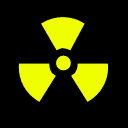
Radiation Monitor
@LongmontRadMon
7h
174 CPM, 1.4129 uSv/h, 1.1404 AVG uSv/h, 4 time(s) over natural radiation
Radiation Monitor
@LongmontRadMon
8h
162 CPM, 1.3154 uSv/h, 0.9502 AVG uSv/h, 3 time(s) over natural radiation
Radiation Monitor
@LongmontRadMon
21h
150 CPM, 1.2180 uSv/h, 0.9166 AVG uSv/h, 3 time(s) over natural radiation
Radiation Monitor
@LongmontRadMon
23h
144 CPM, 1.1693 uSv/h, 0.8401 AVG uSv/h, 3 time(s) over natural radiation
Radiation Monitor
@LongmontRadMon
21 Jan
138 CPM, 1.1206 uSv/h, 0.8801 AVG uSv/h, 3 time(s) over natural radiation
Radiation Monitor
@LongmontRadMon
21 Jan
144 CPM, 1.1693 uSv/h, 0.8781 AVG uSv/h, 3 time(s) over natural radiation



We need a drink!
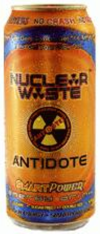

Peace Love Light
tfw
[align=center][color=magenta]Liberty & Equality or Revolution[/align]
Ok today in eastern Ontario I wiped half the car winshield with a paper towel and did a freezing rain check for radiation Jan 23rd, 3:15 PM. My first
test at 2:45 pm read 0,29 microseiverts. This 0.73 [5 X background] was my second test at 3:15. At 3:50 I rechecked this same sample [by request] and
35 minutes later it was still reading o.28 to 0.31 microseiverts, steady. [2 X background]. Since my last video, the last few snowfalls have tested as
normal background or just a few points above.
Originally posted by jude11
You can be guaranteed that when the time comes we won't even know it because they won't tell us useless eaters.
They will make sure that they are locked away with their loved ones in one of the many bunkers built for them. Only when we start looking around and realize that the elite are slowly disappearing will we wake up.
We are not important.
We only eat the food that they want to hoard and we must be allowed to die off.
I only hope that some will see these pathetic dirt bags for what they truly are and not give them the chance to run.
Payback is always sweet.
Peace

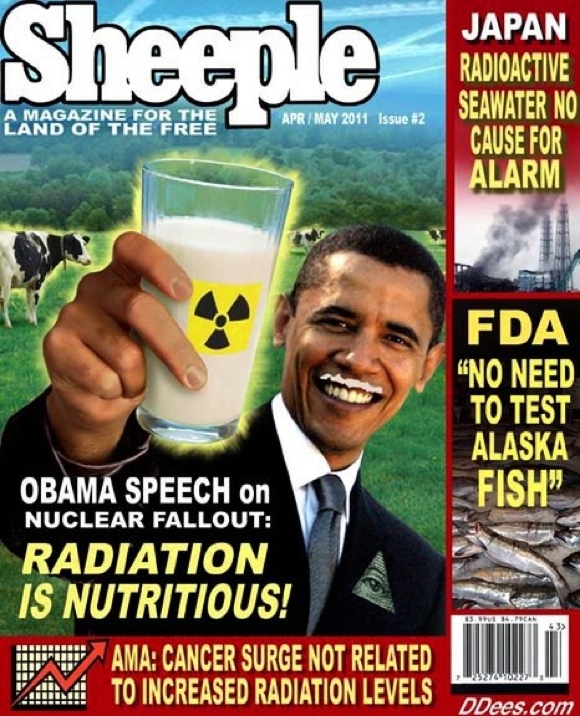
Greetings jude11:
Thank you as always, for your time, consideration and participation.
We need to keep the horror of this environmental warfare nuclear holocaust on the front page
of we, the people's, minds and thoughts in a positive, pro-active way, so as to be a beacon of light in the dark night of a potential nuclear winter, as [color=Cyan]positive thoughts create positive reality.
We certainly do not need any more distractions to further pollute our understanding of manifesting reality.
We need not go there any further, as Unity_99 is, as always (TY), on top of that angle.

This is not over, by a long shot.
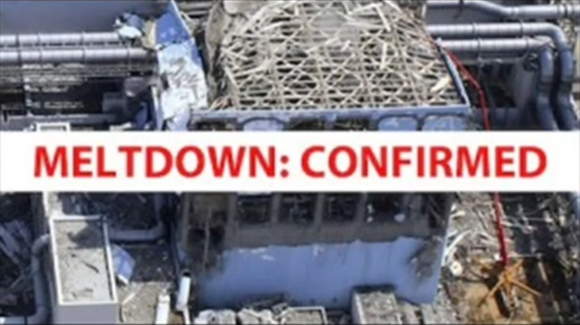
We always are gratified when we take the time (which we, as a species, are quickly running out of) to enjoy a sample of your wide-ranging posts. Speaking of time, we have been utilizing a tad bit extra time to format our threads and posts so as to be more visually appealing and hopefully act as a magnet for attention, as there is a multitude of other attention-getting things to read on ATS (elsewhere doesn't count in this equation).
Thank you for all you do.
BTW, the bunkers are being dealt with and do you happen to have an outlet for large amounts of 'slightly-used' office furniture; FOB Denver
Which, of course, was the perfect segue...
Payback is always sweet.
Please allow us a bit of latitude, as it will all come together by the end of this post. There is more than one way to skin the [color=Chartreuse]Fukushima Death Dragon. Read and enjoy our signature threads for further enlightenment, if you please.
Part of our overall media campaign has been to post Fukushima-related Tweets that link to ATS, in the hope that more than a few peeps will come on over and sit a spell and immerse themselves in the search for truth - welcome new members from around the world!
And maybe they'll take a look at EARTH AID, the Concert to Save Humanity.
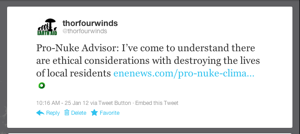


Back to payback. We have been having a bit of fun here, and would appreciate your keen insight and comment.

That is not Photoshop, people.
Do we have your undivided attention now?
FULL DISCLOSURE
[color=00FF00]SOPA was solely responsible for this "U.S. TYRANNY" post on China's Development webpage.
We did this to attract (The Truth Is Viral) Bobby Powell's attention, so as to draw him, his technical abilities and general media savvy to the plight of the Japanese people directly affected by this [color=Cyan]violation of basic human rights to a radiation-free environment and future.
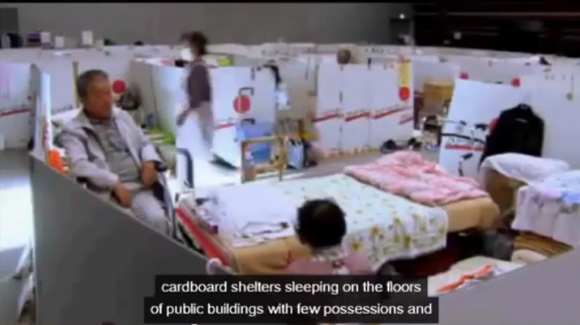
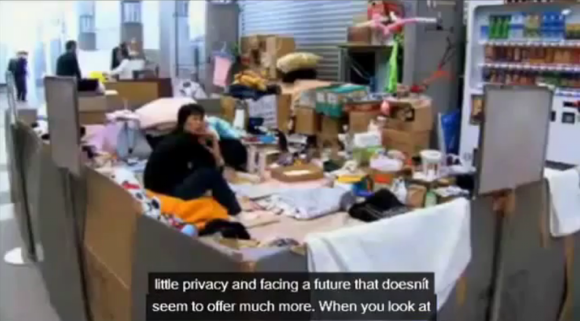
We further believe that by putting a human face on this catastrophe, we can continue to focus attention on the fact that the Nukushima multiple melt-through disaster/fiasco is spewing life-altering radiation 24/7/365 with no solution nor end in sight. Inertia must be overcome.

[color=FDD017]The unification of the Occupy and Anti-Nuclear movements worldwide has exploded into the worst nightmare conceivable for the intertwined military industrial complex and the beleaguered commercial nuclear power industry, because an informed, motivated and disenfranchised populace is an enraged monster that cannot be easily returned to the cage.
ANO revealed
(click graphic for stargate)

Peace Love Light
tfw
[align=center][color=magenta]Liberty & Equality or Revolution[/align]
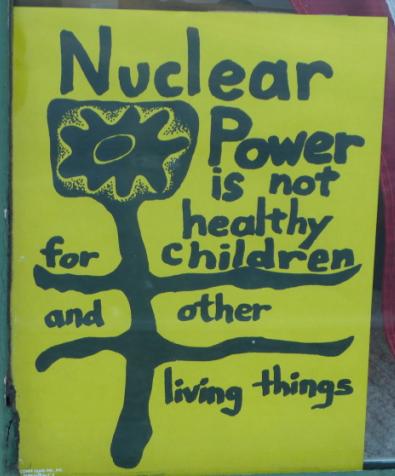
edit on 30/1/2012 by thorfourwinds because: color
new topics
-
New York Governor signs Climate Law that Fines Fossil Fuel Companies
US Political Madness: 2 hours ago -
Meta Llama local AI system is scary good
Science & Technology: 7 hours ago -
This is why ALL illegals who live in the US must go
Social Issues and Civil Unrest: 9 hours ago -
UK Borders are NOT Secure!
Social Issues and Civil Unrest: 11 hours ago
top topics
-
This is why ALL illegals who live in the US must go
Social Issues and Civil Unrest: 9 hours ago, 17 flags -
New York Governor signs Climate Law that Fines Fossil Fuel Companies
US Political Madness: 2 hours ago, 11 flags -
Former ‘GMA Producer’ Sues NPR-Legacy Media Exposed
Propaganda Mill: 13 hours ago, 9 flags -
Happy Hanukkah…
General Chit Chat: 13 hours ago, 8 flags -
UK Borders are NOT Secure!
Social Issues and Civil Unrest: 11 hours ago, 6 flags -
Meta Llama local AI system is scary good
Science & Technology: 7 hours ago, 6 flags -
New Footage - Randy Rhoads 1979 LIVE Guitar Solo Footage at the Whisky - Pro Shot
Music: 13 hours ago, 5 flags
active topics
-
Meta Llama local AI system is scary good
Science & Technology • 22 • : randomuser2034 -
Former ‘GMA Producer’ Sues NPR-Legacy Media Exposed
Propaganda Mill • 5 • : WeMustCare -
New York Governor signs Climate Law that Fines Fossil Fuel Companies
US Political Madness • 10 • : CosmicFocus -
This is why ALL illegals who live in the US must go
Social Issues and Civil Unrest • 21 • : Solvedit -
Happy Hanukkah…
General Chit Chat • 22 • : AlroyFarms -
FAA Investigates Christmas Drone Show Gone Wrong in Orlando, FL 12/2024
Other Current Events • 13 • : Astrocometus -
DefCon Teetering on Escalation
World War Three • 53 • : annonentity -
Putin Compares Himself to Jesus Promoting Traditional Values Against the Satanic West
Mainstream News • 76 • : WeMustCare -
Trump says ownership of Greenland 'is an absolute necessity'
Other Current Events • 52 • : cherokeetroy -
RFK JR endorses Trump
2024 Elections • 46 • : WeMustCare

